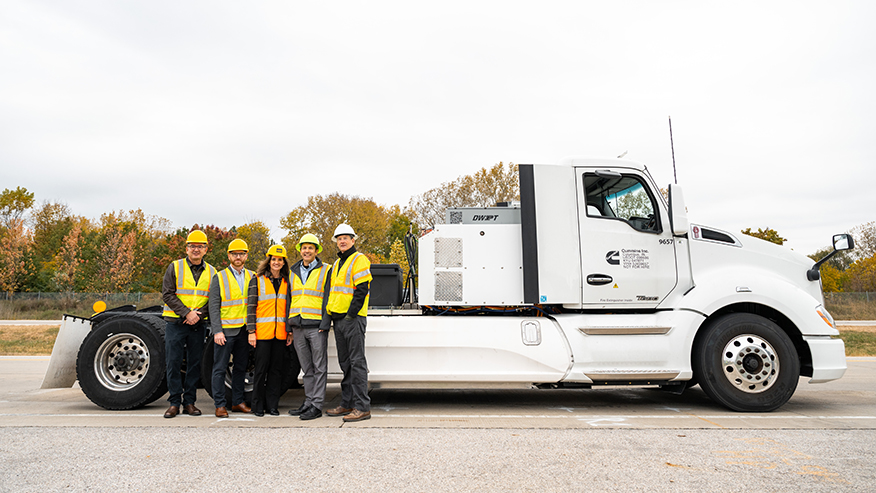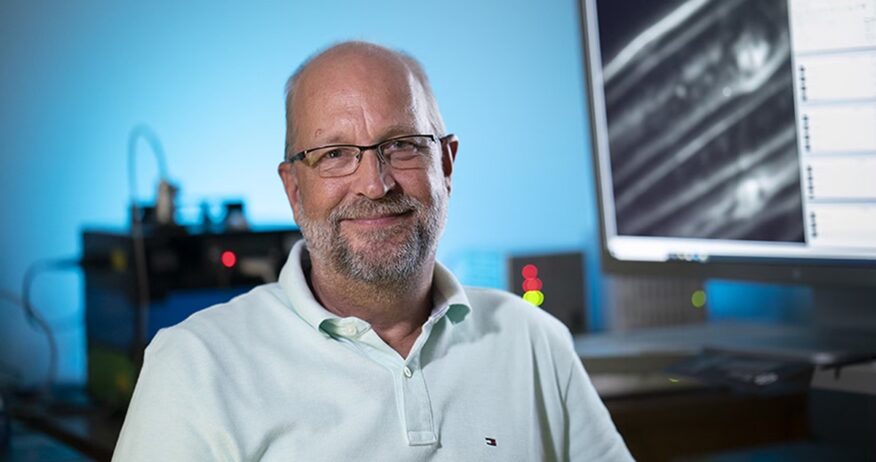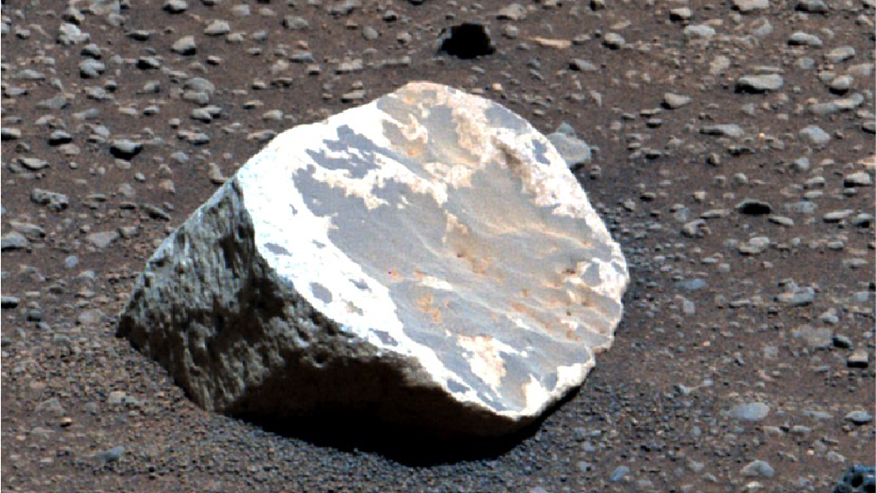From artisanal to automatic: Purdue tool allows greater control, speed for semiconductor manufacture
Users can customize a recipe to peel 1-atom-thick 2D materials like graphene from a surface and affix it onto another

Former Purdue University mechanical engineering students Alex Bauer, from left, Mark Ragei and Dylan Balter make a presentation during the spring 2022 Malott Innovation Awards. A research team of Purdue University mechanical engineers led by associate professor Thomas Beechem has created a tool that makes the manufacture of ultrathin semiconductors more consistent, controllable and repeatable than traditional methods. It uses a dry-transfer process to move graphene and other ultrathin, 2D materials from the growth substrate where they are synthesized to a device substrate. (Purdue University photo/Jared Pike)
WEST LAFAYETTE, Ind. —
Purdue University engineers have developed a patent-pending tool to make the manufacture of ultrathin semiconductors more consistent, controllable and repeatable than traditional methods.
Thomas Beechem, an associate professor of mechanical engineering in the College of Engineering, leads a research team that has created a tool that uses a dry-transfer process to move graphene and other ultrathin, 2D materials from the growth substrate where they are synthesized to a device substrate. A two-minute video shows the tool collecting graphene from copper foil and placing it on a silicon wafer.
“Everyone wants their electronics to be smaller, faster, quicker and more powerful. But transistors keep getting smaller and smaller, which means the semiconductor industry is looking beyond silicon,” Beechem said. “Manufacturers are thinking about materials that are only atoms thick, like graphene and molybdenum disulfide, or MoS2, but the substrates that they grow on best aren’t the best to make devices.
“The challenge is moving the material from the growth substrate to a platform good for making devices. Right now, this transfer is an artisanal process completed in a one-off manner, but workers can’t do that at scale.”
The Purdue tool peels 2D materials from one substrate and places them on another. Beechem said it provides users with more control and degrees of freedom, including creating their own recipes for a scalable process. Using a dry-transfer process, the tool also removes the need to etch materials that easily contaminate the ultrathin layers.
“The tool allows us to control several aspects of peeling samples from a substrate: How much force is used to grab the sample? How fast do we peel? What angle do we contact the 2D material with the stamp?” Beechem said.
“The goal is opening up the parametric space to develop fab recipes for 2D materials in the same way we do for all processes taking place in a semiconductor clean room. Users can try different degrees of freedom – not just up and down, but rotation as well – to find the best recipe for their particular growth substrate and device platform.”
The next step to develop the tool for commercialization is to connect with industrial partners that are pursuing ways to standardize 2D-device fabrication.
“Two-dimensional materials have been darlings in the lab for over a decade now,” Beechem said. “To get them off the lab bench and into the real world, tools must be developed that allow their scalable integration into commercial fabs. Our tool steps in that direction in an attempt to make an iffy process in the lab into something more automatic.”
Beechem disclosed the tool to the Purdue Research Foundation Office of Technology Commercialization, which applied for patent protection on the intellectual property. Industry partners interested in further developing the technology for the marketplace should contact Dhananjay Sewak, dsewak@prf.org, about 2023-BEEC-69991, “Mechanical method to transfer two-dimensional material via thermo-mechanical control.”
Beechem has received funding from the Sandia National Laboratories Laboratory Directed Research and Development (LDRD) Program to create and develop this work.
Purdue’s persistent pursuit of microchip advancement through innovation, partnerships and programs is highlighted in an online roundup of news.
About Purdue University
Purdue University is a top public research institution developing practical solutions to today’s toughest challenges. Ranked in each of the last five years as one of the 10 Most Innovative universities in the United States by U.S. News & World Report, Purdue delivers world-changing research and out-of-this-world discovery. Committed to hands-on and online, real-world learning, Purdue offers a transformative education to all. Committed to affordability and accessibility, Purdue has frozen tuition and most fees at 2012-13 levels, enabling more students than ever to graduate debt-free. See how Purdue never stops in the persistent pursuit of the next giant leap at https://stories.purdue.edu.
About Purdue Research Foundation Office of Technology Commercialization
In fiscal year 2022, the office reported 157 deals finalized with 237 technologies signed, 379 disclosures received and 169 issued U.S. patents. The office is managed by the Purdue Research Foundation, which received the 2019 Innovation and Economic Prosperity Universities Award for Place from the Association of Public and Land-grant Universities. In 2020, IPWatchdog Institute ranked Purdue third nationally in startup creation and in the top 20 for patents. The Purdue Research Foundation is a private, nonprofit foundation created to advance the mission of Purdue University. Contact otcip@prf.org for more information.
Writer/Media contact: Steve Martin, sgmartin@prf.org
Source: Thomas Beechem III, tbeechem@purdue.edu



